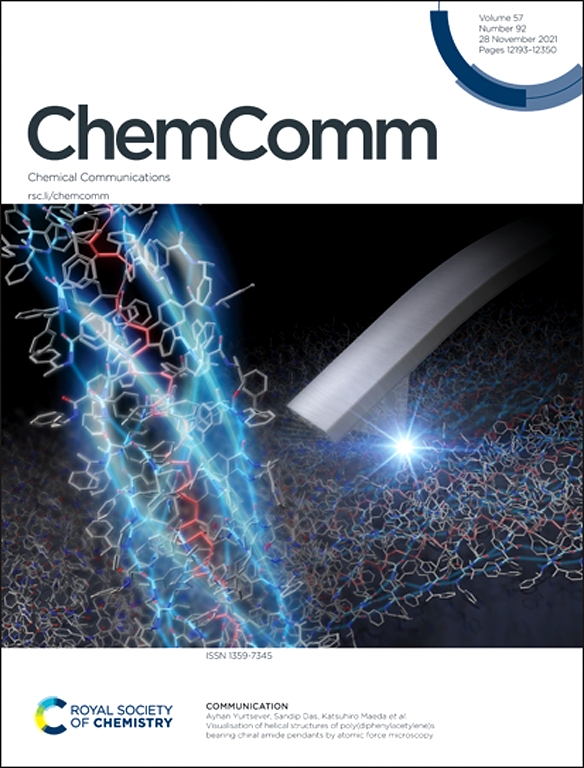蛋白质功能化的光诱导化学
IF 4.2
2区 化学
Q2 CHEMISTRY, MULTIDISCIPLINARY
引用次数: 0
摘要
用药物或显像剂衍生单克隆抗体等生物分子,同时保持其生物活性,是一项具有挑战性的任务。理想情况下,蛋白质功能化需要在温和条件下操作的方法,快速,高效(高产),化学选择性或位点特异性,重要的是,非变性。已经开发了广泛的热介导试剂,用于使用基于蛋白质的反应性或生物正交策略进行直接标记,但可以说最令人兴奋的机会在于应用光化学来创建新的共价生物偶联键。利用目前的化学方法来调节光活性基团的光谱特征,以及具有精确发射特性的廉价、高功率发光二极管,探索利用光诱导化学来制造基于蛋白质的生物活性分子从未如此容易。在生物医学中,蛋白质共价键的性质会对蛋白质偶联物的物理化学性质和性能产生巨大影响。光化学方法为蛋白质上的新型共价键提供了途径,具有微调生物相互作用的潜力,从而改善了靶标摄取、结合特异性、代谢过程和体内冲洗动力学。本综述重点介绍了用于蛋白质标记的光活性试剂的最新进展。我们还讨论了在水介质中有效地实现光诱导合成功能化蛋白质偶联物的实验条件和关键要求。本文章由计算机程序翻译,如有差异,请以英文原文为准。

Light-induced chemistry for protein functionalisation
Derivatising biomolecules like monoclonal antibodies with drugs or imaging agents, whilst preserving their bioactivity, is a challenging task. Protein functionalisation ideally requires methods that operate under mild conditions, are rapid, efficient (high yielding), chemoselective or site-specific, and importantly, non-denaturing. A broad collection of thermally mediated reagents for direct labelling using protein-based reactivity, or bioorthogonal strategies, has been developed, but arguably the most exciting opportunities lie in the application of photochemistry to create new covalent bioconjugate bonds. With current chemical methods for auxochromic tuning of the spectral features of photoactive groups, and with cheap, high-powered light-emitting diodes with precise emission properties, it has never been easier to explore the use of light-induced chemistry for making protein-based bioactive molecules. In biomedicine, the nature of the covalent bond to the protein can have a dramatic impact on the physicochemical properties and performance of the protein-conjugate. Photochemical methods provide access to new types of covalent linkages on protein with the potential to fine-tune biological interactions, leading to improvements in target uptake, binding specificity, metabolic processing, and washout kinetics in vivo. This perspective/review highlights recent advances in the development of photoactive reagents for protein labelling. We also discuss the experimental conditions and critical requirements to implement light-induced synthesis of functionalised protein-conjugates in aqueous media effectively.
求助全文
通过发布文献求助,成功后即可免费获取论文全文。
去求助
来源期刊

Chemical Communications
化学-化学综合
CiteScore
8.60
自引率
4.10%
发文量
2705
审稿时长
1.4 months
期刊介绍:
ChemComm (Chemical Communications) is renowned as the fastest publisher of articles providing information on new avenues of research, drawn from all the world''s major areas of chemical research.
 求助内容:
求助内容: 应助结果提醒方式:
应助结果提醒方式:


